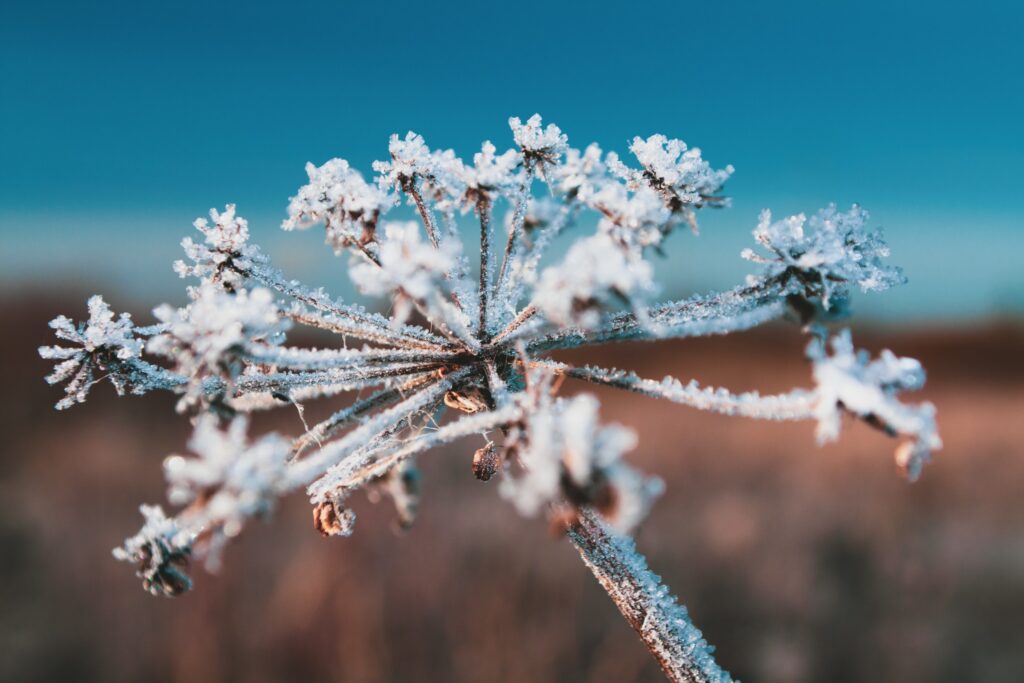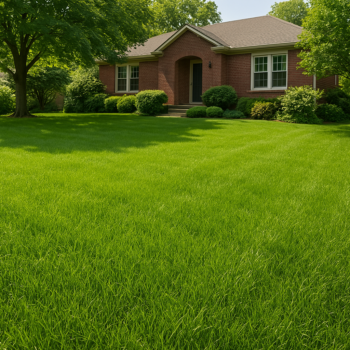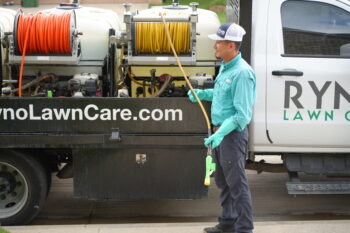As winter approaches and the temperature drops, it’s essential to learn what to do before a freeze for your yard. Freezing conditions can harm your plants, trees, and landscape if you’re not adequately prepared. To ensure the health and longevity of your outdoor oasis, here are some essential tips to follow before a freeze.
Water your plants and trees

On the day before the freeze, it’s a good idea to water your plants and trees. Moist soil retains heat better than dry soil, which can help protect plant roots during freezing temperatures.
Ensure the entire root system of each plant receives a deep watering, but be cautious not to overwater, as waterlogged soil will cause its own problems.
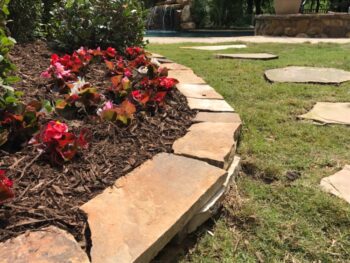
Mulch your landscape beds
Applying a layer of mulch around your landscape beds provides a protective barrier against freezing temperatures. Mulch helps retain soil moisture, regulates the temperature of the soil, and insulates plant roots.
Spread a 2-3 inch layer of organic mulch, such as wood chips or straw, around your plants, trees, and shrubs to keep them cozy during the freeze.
Cover delicate plants
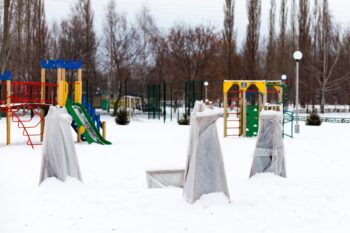
For delicate plants or those no longer in their growing season, cover them with cloth or burlap to provide an extra layer of protection.
Use stakes to create a frame and drape the cloth or burlap over it, making sure it reaches the ground on all sides.
This covering helps to trap heat from the soil and prevent direct contact with freezing air.
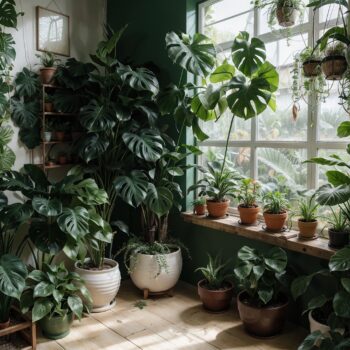
Move potted plants indoors
If you have potted plants in your yard, consider relocating them indoors during freezing temperatures. Indoor spaces, such as garages or basements, provide protection from extreme cold.
Ensure the plants receive adequate sunlight and water during their time indoors until it’s safe to return them to their proper outdoor location.
Protect your pipes
Freezing temperatures can cause water pipes to burst, leading to expensive repairs. Before a freeze, wrap exposed outdoor pipes with faucet covers or heat tape. Disconnect any garden hoses and drain the water from outdoor faucets to prevent freezing and damage.
Bring sensitive plants indoors
If you have sensitive plants that cannot withstand freezing temperatures, like tropical or subtropical plants, it’s best to bring them indoors temporarily. Find a suitable location in your home that provides sufficient sunlight and a stable temperature. Keep in mind that these plants may require additional care and attention while indoors, such as regular watering and proper humidity levels.
Check your irrigation system
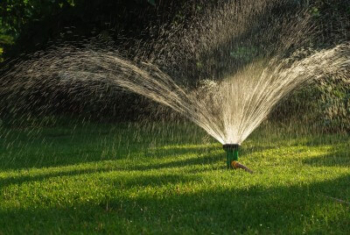
Ensure your irrigation system is properly winterized before the freeze. Drain any excess water from the system to prevent freezing and potential damage.
Consult a professional if you’re unsure about the correct steps to winterize your irrigation system. We have a lawn irrigation service page with details about how we can help.
Leave frost-damaged plants alone
After a freeze, resist the urge to immediately prune or remove frost-damaged plants. Wait until the danger of frost has passed before assessing the extent of the damage.
Some plants may recover on their own, and premature pruning can cause further harm. Once the last freeze has passed, consider planting seasonal plants and flowers with our landscape installation service.
Wrapping Up
By following these essential tips, you will protect your yard and garden from the potential damage caused by freezing temperatures. Remember, each yard is unique, and some plants may require specific care during a freeze.
Consult with a local horticultural expert or a professional landscaper for personalized advice based on your specific climate and plant selection. Stay proactive, stay prepared, and keep your yard thriving even during the coldest months of the year.

